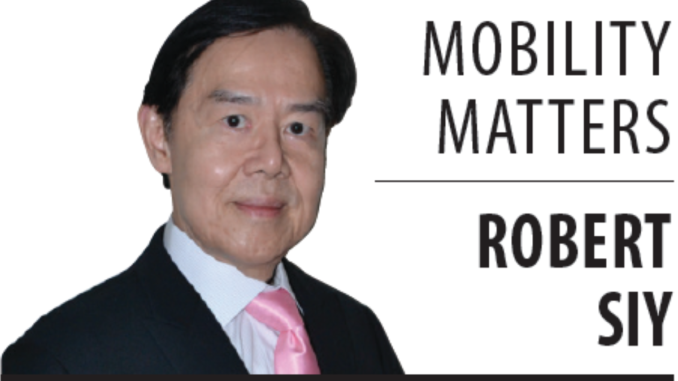
I have just spent the last two weeks in Mexico, my first visit to this fascinating country. Because of Mexico’s inclusive urban environment and wide range of attractive mobility options, I would argue that Mexicans enjoy a much higher quality of life than Filipinos. Although Mexico has its share of car-oriented infrastructure (an extensive network of urban roads and expressways linking different parts of the country), the level of car dependency in Mexico is far less than what Filipinos experience in our country.
There is much to emulate from the country:
– Pathways are attractive and inclusive. Granted, Mexico enjoys cooler temperatures than the Philippines. But what stands out is the well-developed pedestrian infrastructure in urban areas. Sidewalks are generally spacious and tree-lined; pathways are smooth and free of hazards and obstructions. Shade trees keep neighborhoods green, attractive and cool. There is a conscious effort to make walkways accessible and inclusive, especially for persons with disability. Curb ramps are incorporated into sidewalk designs. On several main roads, tactile pavement tiles are available to guide the visually impaired.
– Pedestrian road crossings are almost always “at grade” or at ground level. Signalized intersections with countdown displays give pedestrians sufficient time to cross at a reasonable and safe pace. Elevated footbridges (regarded as “anti-pedestrian infrastructure”) are a rarity, and, where they exist, are built with ramps instead of stairs. On multi-lane expressways passing through cities, speed bumps are a common traffic calming feature — forcing drivers to slow down and be conscious of pedestrians and cyclists moving in the same road space.
– Parks and trees are abundant. In big and small cities in Mexico, green public space is valued and cared for. Most neighborhoods are designed with playgrounds and pocket parks. Any patch of open land, even along roadways, is filled with trees that are carefully tended. These spaces are designed to be places for leisure, recreation and social interaction — open to all. They are well-maintained by local authorities, with paved pathways and plentiful seating (in contrast with Metro Manila where park benches are rarely seen). On any day, these green spaces will have people of all ages exercising, walking their pets, meeting with friends and enjoying nature and clean air.
– Public transportation is prioritized. The priority accorded to public transport is apparent in the road space that is offered exclusively to buses on major roads. Mexico City has one of the most extensive bus rapid transit (BRT) systems in the world, moving over 1.5 million passengers daily and offering the same convenience and efficiency as a subway or metro line at much less investment and operating cost. Buses move along dedicated lanes where they travel without friction with private motor vehicles. (Smaller Mexican cities, such as Puebla and Leon, also have BRT.)
With BRT, passengers have shorter, more reliable travel times. Electronic display screens at bus stops and terminals (and passenger information available on mobile phones) are able to accurately predict bus travel and arrival times. Buses are low-entry and fully accessible for persons on wheelchairs as well as anyone who cannot climb stairs. Access to Mexico City’s BRT bus stops and stations are “at grade” (using signalized pedestrian crosswalks to get to and from the sidewalks to the buses at the median).
Mexico City is now converting more of its public transport fleet to battery-electric buses, delivering cleaner air and lower operating cost. Accordingly, many residents and visitors to Mexico City prefer to use both trains and buses to get around, even if they own a private car. It is also noteworthy that the exclusive lanes for buses are also of great value for emergency vehicles (fire trucks, police, ambulances) enabling them to escape the heavy traffic during rush hour and in the downtown areas.
– Bicycles are a mainstream travel mode in Mexico. All over Mexico, you will see people of all ages using bicycles for their daily travel. Networks of bike lanes are found in most Mexican cities — spacious (2-3 meters wide), clearly delineated, often with intermittent low barriers. Motor vehicles (cars and motorcycles) are generally compliant and do not enter the bike lanes. Because the bike lanes are wide (some are bi-directional), I observed that they were also being used by ambulances responding to emergencies. Bike lanes were being monitored by CCTV cameras which appeared to be an effective deterrent. Bike parking was available in many parts of Mexico City, even in the busiest commercial districts.
There seems to be a recognition among shop and restaurant owners that bicycles are good for business. An important measure to promote cycling in Mexico City is the car-free Sunday morning (8:00 a.m. to 2:00 p.m.) on major roads. All over Mexico City, I noticed people using rental bicycles. Because of the “whole of government” effort to promote cycling as a mainstream travel mode and the availability of safe cycling infrastructure, bike sharing programs were popular and financially viable.
At the end of the trip, I came away envious of Mexico, but with optimism that the Philippines, given the right priorities, policies and spending, could likewise offer its citizens more livable and sustainable urban environments.
Robert Y. Siy is a development economist, city and regional planner, and public transport advocate. He is a co-convenor of the Move As One Coalition. He can be reached at [email protected] or followed on Twitter @RobertRsiy.


Be the first to comment